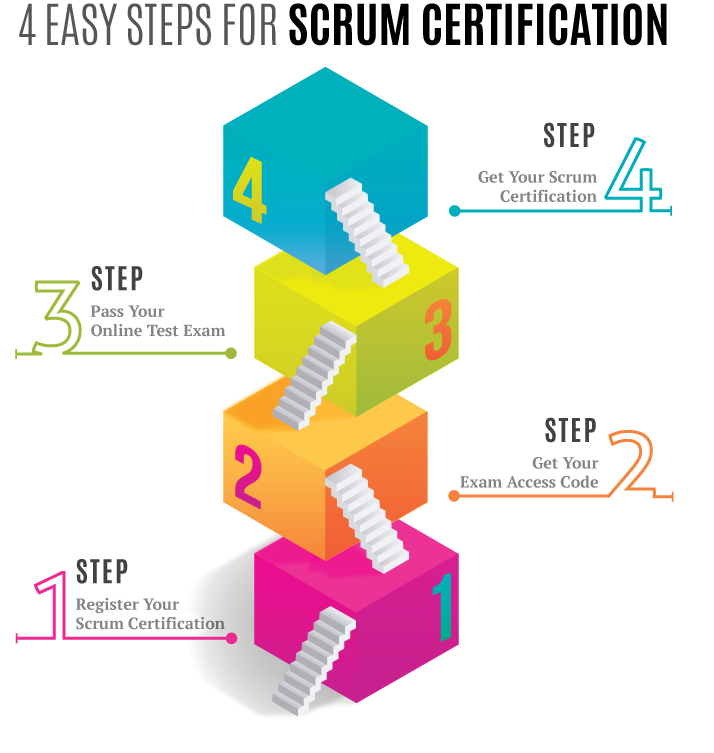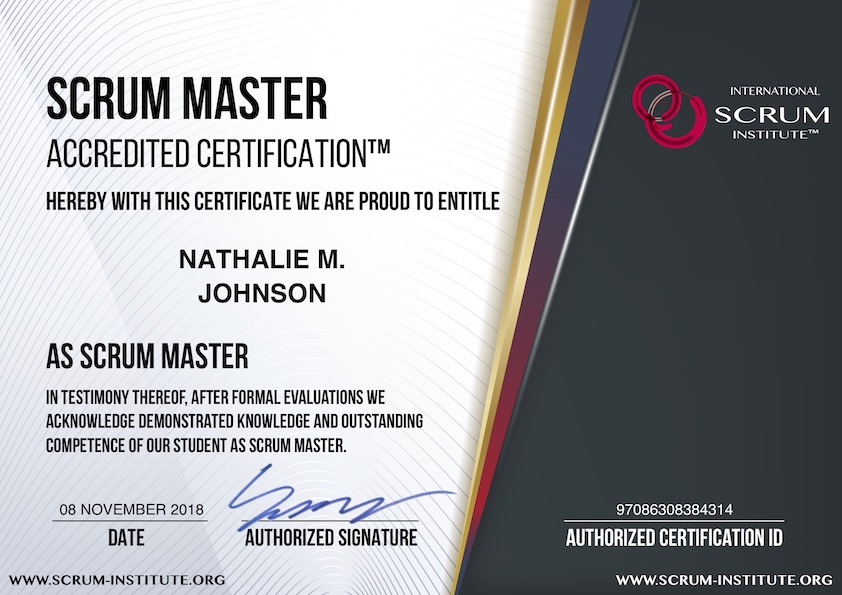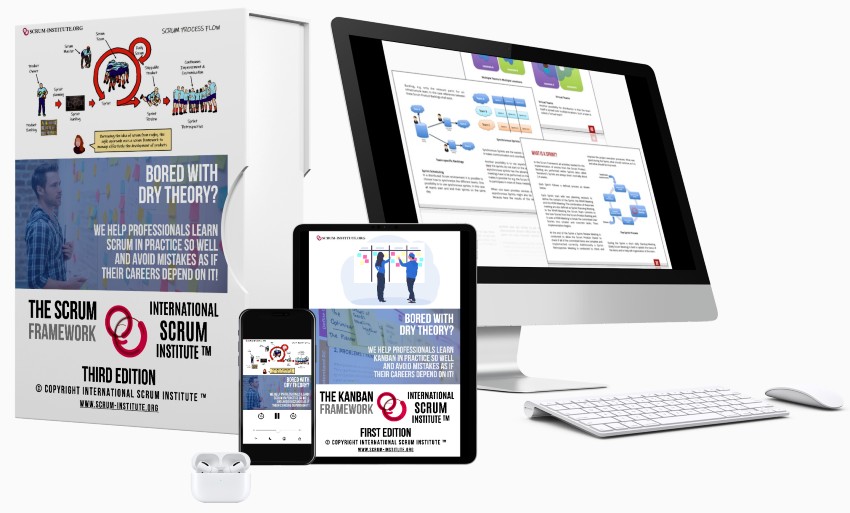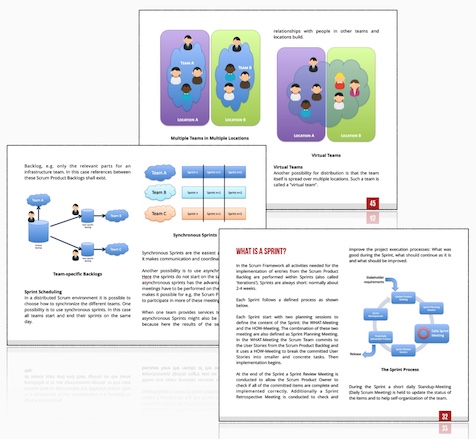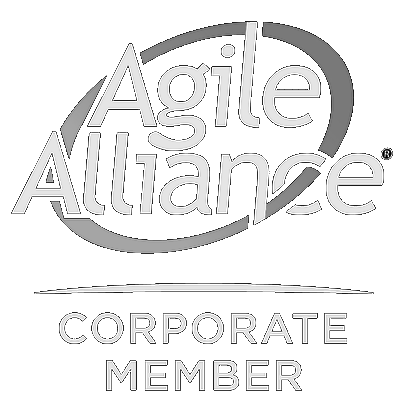Scrum Release Planning: Best Practices for the Success of Agile Delivery
Navigating the complexities of Agile software development can often feel like walking through a maze. Getting lost is easy, but making it to the end successfully requires clear and effective release planning – a critical aspect of Scrum methodology. In this insightful blog post, we're going to demystify Scrum Release planning and share some stellar best practices to help ensure your project not only survives but thrives in today's competitive tech landscape. It’s a well-preserved secret that successful Agile teams use to deliver high-quality software on time, and we’re about to spill the beans!
Release planning in Scrum is a collaborative process where the Scrum team and stakeholders determine which product backlog items will be included in upcoming releases. It involves prioritizing user stories, estimating effort, and setting release goals, timelines, and scope. Through effective release planning, teams can establish a clear roadmap for product delivery, aligning business goals with customer needs in an iterative and incremental manner.
A Definition: Scrum Release Planning
A Scrum Release Planning is the creation process of a very high-level plan for multiple Scrum Sprints (e.g. three to twelve iteration). It is a guideline that reflects expectations about which features will be implemented and when they are completed. It also serves as a base to monitor progress within the project. Releases can be intermediate deliveries done during the project or the final delivery at the end.
To create a Release Plan the following things have to be available:
- A prioritized and estimated Scrum Product Backlog (More about Scrum Product Backlog)
- The (estimated) velocity of the Scrum Team (More about Scrum Capacity Planning)
- Conditions of satisfaction (goals for the schedule, scope, resources)
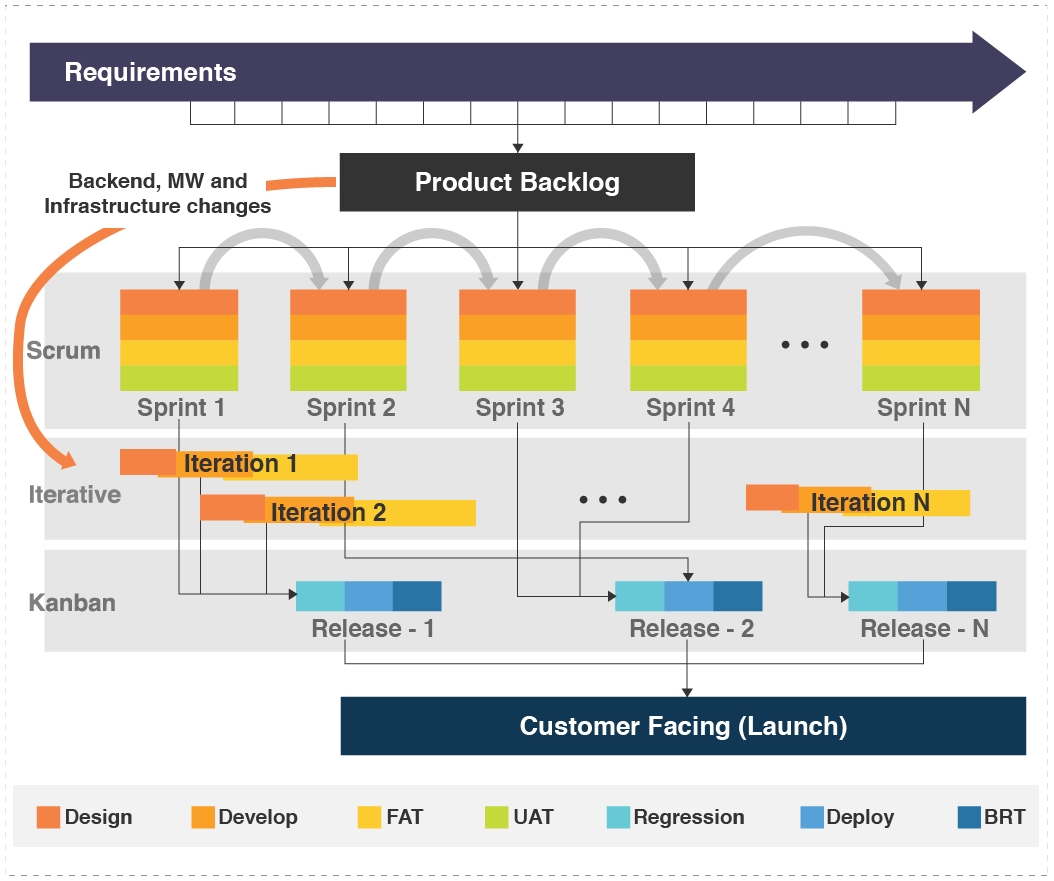
Release Planning in Scrum
Release Planning in Scrum
Release planning is an essential part of the Scrum methodology, and it forms a crucial component of Agile software development. As Agile software development emphasizes delivering working software frequently, release planning in Scrum helps teams plan for the delivery of these increments to better align with business goals.
Let's take a closer look at the key aspects involved in release planning in Scrum.
- According to the 14th State of Agile report, 59% of organizations implementing Agile practices use Scrum, potentially requiring release planning.
- The same report indicates that approximately 58% of Agile practitioners identified "ability to manage changing priorities" as a main benefit - an area where a well-executed release plan can deliver considerable value.
- In a survey conducted by SCRUMstudy on over 5,000 companies, it was found that structured release planning contributed by approximately 47% to the overall success of Scrum projects.
- Release planning is a vital aspect of the Scrum methodology and Agile software development. It enables teams to align their delivery of working software increments with business goals, ensuring that they are meeting customer needs and optimizing their development process.
Setting Goals and Identifying Features
The first step is to set specific goals for the desired outcome and prioritize them based on customer or business value. Setting clear objectives would help guide the project throughout its duration and ensure all stakeholders are aligned correctly.
Suppose you are working on developing a mobile application where your main objective is to achieve 10,000 users within six months of the launch. In that case, this goal should be prioritized higher than other business objectives such as generating revenue from ads or providing premium features.
Once you have set your goals, the next step is to identify specific features that align with these objectives. Identifying these features will help establish an initial scope for each release and prioritize work items based on their potential value.
Continuing with our mobile application example, identifying features could include User Registration, Profile Creation, News Feed Creation, Messenger Integration, and so on. Choosing which features should be included in each release involves careful consideration as it would have a direct impact on reaching our desired outcome - 10 thousand users.
Now that we know how important setting clear goals and identifying features are let's see how we can establish a timeline to achieve these goals.
Establishing Release Timeline
Effective release planning is central to agile software development, as it provides the framework for executing projects within a fixed timeline. Therefore, establishing the release timeline should be the first step of Scrum release planning.
At this stage, a Product Owner and a team of cross-functional developers would determine appropriate dates and milestones based on the backlog's overall priorities. This timeline should consider factors like resource availability (developers' vacations, changes in product strategy) and dependencies (integration test cycles).
For example, suppose that the product owner wants to launch a new feature by year-end, which means identifying essential functionality items and prioritizing their delivery within specific time constraints. Developers will then create assessments determining if delivering these features are reasonable based on their estimates.
Once you have established a realistic timeline with agreed-upon priorities, your team can proceed with execution.
Release Execution: Processes and Story Prioritization
Think of Scrum release execution as an orchestra where there are different sections playing tunes together – The conductor plays a vital role in ensuring everyone is aligned and harmonically delivering a masterpiece without much friction.
It's crucial to monitor progress during release execution regularly. This would involve overseeing daily Scrum meetings, constant feedback from team members to assess levels of deliverable quality and stakeholder communication to keep them aware of any changes or issues encountered ahead of launch.
Suppose your team discovers overlooked dependencies halfway through the sprint period. In that case, this discovery should be communicated immediately to all relevant parties. While this could potentially delay the final product's launch date, it saves time down the line as you'll avoid rushing incomplete work around release time.
Additionally, story prioritization is key to Scrum release planning – it clarifies developers' task lists, ensuring everyone goes about their work efficiently without confusion regarding goals. Assigning priority levels also helps development teams focus on areas most critical for clients to deliver the most value and functionality.
A streamlined prioritization process, coupled with seamless execution, can make a significant difference in timelines - resulting in successful product launches.
Sprint Preparation and Delivery
Before embarking on a Scrum project, it's critical to prepare adequately for the sprints' smooth delivery. This begins with sprint planning, consisting of ceremonies and best practices that help team members understand their roles and responsibilities, project requirements and limitations, and planned goals and deliverables.
An effective sprint planning process involves breaking down the work required to meet the overall project goal into manageable tasks. (See more about Scrum Planning Poker) The team should ensure they have the necessary tools, resources, and knowledge base to start working on tasks immediately.
The product backlog - a prioritized list of features, functions, or tasks essential for meeting project objectives - should be well-documented. This ensures that developers understand the business value behind each item in the backlog.
Tracking progress is also essential; this helps in identifying potential issues or bottlenecks in the process while tracking sprint-related metrics such as burn-down rate assist in forecasting and better understanding estimated completion time.
How Scrum Teams Create A Release To Deliver The Most Value to Their Stakeholders from their Scrum Sprints
There are two major ways of approaching release planning in Scrum: the traditional release planning approach and the iterative release planning approach. The traditional approach involves creating a detailed project plan with fixed timelines and scope, while the iterative approach focuses on continuously delivering small, valuable increments of the product.
In Scrum practice, depending on the type of project (feature- or date-driven) the release plan can be created in different ways:
1. Feature-driven Scrum Please Plan
If the project is feature-driven, the sum of all features within in a release can be divided by the expected velocity. This will then result in the number of sprints needed to complete the requested functionality.
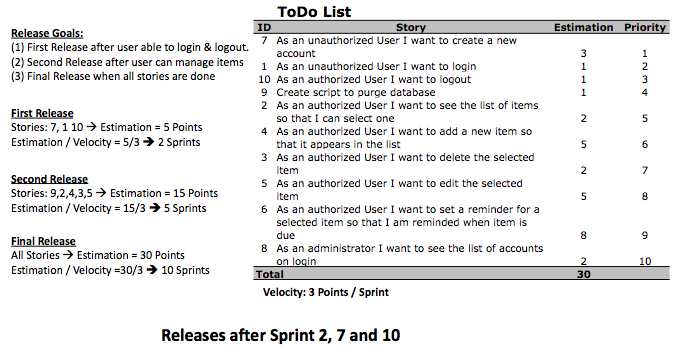
Scrum Release Plan for a Feature-Driven Project
2. Date-driven Scrum Release Plan
If the project is date-driven we can simply multiply the velocity by the number of Sprints and we'll get the total work that can be completed within the given timeline.
Like the Scrum Product Backlog the Release plan is not a static plan. It will change during the whole project when new knowledge is available and e.g. entries in the Scrum Product Backlog are changed and re-estimated. Therefore the Release Plan should be revisited and updated in regular intervals, e.g. after each Sprint.

Scrum Release Plan for a Feature-Driven Project
Agile Best Practices for Release Planning
Agile software development is all about delivering high-quality software releases quickly. To achieve this objective, release planning becomes crucial as it sets the stage for successful project execution.
Effective agile release planning involves creating a shared understanding of customer requirements while leaving enough room for innovation. This requires collaboration among team members, creating an environment where everyone feels empowered to share ideas and concerns.
One major advantage of agile release planning is that it allows for flexibility. By breaking up projects into small iterations (sprints), teams can pivot mid-project if something unexpected arises or priorities change.
The following are agile best practices suitable for release planning:
- Focus on delivering value: Start with what's most important for your customer/market first.
- Make smaller commitments initially until you become more experienced with Scrum methodologies..
- Use stakeholder feedback: keep customers involved throughout the development process through periodic reviews..
- Identify dependencies: Plan deliveries according to functionalities dependent on other modules/functions..
- Establish a reliable and consistent sprint schedule: this encourages the team to stay consistent in their effort levels and setting achievable timelines.
- Identify and communicate roadblocks: Recognize potential issues before they materialize, communicate them promptly, so they do not create delays in delivery.
Agile release planning works best when everyone involved understands how it fits into the broader Scrum framework, as well as specific techniques for successful execution. In the next section, we'll examine some success stories highlighting effective release planning measures for Scrum projects.
Scrum Success Stories: Case Studies in Effective Release Planning
Scrum release planning is vital to agile software development, and many organizations have been successful in implementing it. Let's look at some case studies of companies that have used Scrum successfully and see what we can learn from them.
One such company is Spotify. The music streaming giant emphasizes a "release train" approach to their Scrum practices, where multiple teams work together towards a common goal. At the end of each sprint, features are re-evaluated for inclusion in the next release. This approach allows for better communication between teams and facilitates faster releases with improved quality.

Scrum Release Planning: The Process Of Architecting Stakeholder Value
(Usually From known Unknowns and many unknown Unknowns)
Another example is Adobe. Their release planning process involves extensive documentation and detailed product roadmaps that help facilitate communication not only within the development team but also with stakeholders. This enables all parties involved to have a clearer understanding of what's expected of them during each sprint.
Yet another success story is Philips Healthcare. They implemented Scrum in their product development process and were able to deliver a new imaging system that was both higher quality and more customizable than their previous offerings in just six months.
Imagine you're planning a cross-country trip with multiple stops along the way. You need to know where each stop will be, how long you'll stay there, and how much time you'll spend traveling between stops. Scrum release planning is like planning your trip; it allows teams to identify goals, establish milestones, and outline any potential roadblocks they might face.
While these success stories highlight the power of Scrum release planning, it's important to note that implementing this methodology isn't always smooth sailing. There are challenges involved in adopting any new technology or workflow, and companies should carefully consider these before diving headfirst into implementing Scrum.
Ultimately, however, incorporating Scrum release planning into your agile software development process can lead to increased productivity and a more efficient workflow. Studying these success stories and understanding the principles behind them can help you implement Scrum effectively in your organization.
What are the benefits and challenges of implementing release planning in Scrum?
The benefits of implementing release planning in Scrum include better visibility and control over the project timeline, improved stakeholder collaboration and alignment, and the ability to prioritize and deliver valuable features earlier. However, there are also challenges such as accurately estimating effort, managing scope creep, and balancing flexibility with a fixed release schedule. According to a study by VersionOne, organizations that consistently use release planning experience higher productivity and customer satisfaction.
How does release planning help with project management in Scrum?
Release planning is essential for effective project management in Scrum as it provides a structured approach to prioritize and schedule the delivery of features. By defining and organizing the work into manageable increments, release planning helps teams identify dependencies, estimate timelines, and manage risks. Studies have shown that organizations practicing effective release planning in Scrum experience higher project success rates, improved stakeholder satisfaction, and better predictability in delivering value to customers (Source: State of Agile Report).
What is the purpose of release planning in Scrum?
The purpose of release planning in Scrum is to set the vision, goals, and objectives for the product release. It helps the development team to create a roadmap and prioritize the work needed to deliver valuable increments of the product. By having a clear plan, the team can focus on delivering high-quality software and adapt flexibly to meet customer needs. According to a survey by VersionOne, 80% of organizations reported that release planning had a significant positive impact on their ability to deliver value to customers.
What are the key steps involved in the release planning process in Scrum?
The key steps involved in the release planning process in Scrum include defining the product vision, creating a product backlog, estimating and prioritizing user stories, determining the release goal and timeline, conducting release planning meetings, and finally, creating a release plan. These steps ensure that the team has a clear understanding of the project goals, scope, and timelines, enabling them to effectively plan and deliver high-quality software increments. According to a survey by CollabNet VersionOne, 85% of organizations practicing Scrum reported improved ability to manage changing priorities through effective release planning.
Are there any specific tools or techniques recommended for effective release planning in Scrum?
Yes, there are several tools and techniques recommended for effective release planning in Scrum. Some commonly used tools include digital project management software like Jira or Trello, which help with backlog management and tracking progress. Techniques such as user story mapping can also be beneficial in visualizing the product backlog. Additionally, using past performance data and team velocity can assist in making more accurate release plans. According to a survey conducted by VersionOne, 74% of respondents reported using a tool for Agile project management, emphasizing the value of using appropriate tools for release planning in Scrum.
Recap Release Planning In Scrum: Best Practices To Optimize Scrum Release Plans
In the recap of the article on release planning in Scrum, it is crucial to emphasize the significance of addressing various aspects that contribute to the success of the agile methodology. The article covered a broad spectrum of elements, including questions related to the agile process, training for team members, and coaching for continuous improvement. The role of the Scrum product owner in shaping the product roadmap was discussed, highlighting their pivotal position in guiding the team towards achieving goals.
Throughout the article, the focus was on providing valuable information to all involved parties, recognizing that well-informed individuals contribute to the overall success of release plans. The collaboration of people in Scrum, with clear communication channels and shared commitment, was highlighted as a key factor in achieving optimal results. The discussion delved into the various Scrum roles, underlining the importance of each role in the success of the agile framework.
Activities such as estimation, refinement, and iteration planning were explored in detail, acknowledging their crucial roles in the development process. The article stressed the significance of maintaining a strong commitment to user experience, ensuring that the end product meets or exceeds user expectations. Additionally, the retrospective and sprint review activities were addressed as essential components for continuous improvement and learning from past experiences.
The recap reinforced the notion that release plans are dynamic and subject to change, aligning with the iterative nature of agile methodology. It underscored the need for a comprehensive understanding of the agile principles and their application in real-world scenarios. Overall, the article aimed to provide a holistic view of release planning in Scrum, offering insights into the interconnectedness of various elements that contribute to the successful implementation of agile practices.
Share It With Your Colleagues and Friends to Help Them Learn:
Release Planning in Scrum: Scrum Release Plan Best Practices
|
|

|

|

|

|
|
 SCRUM INSTITUTE™
SCRUM INSTITUTE™



